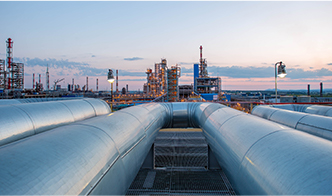-
Cangzhou Yulong Steel Co., Ltd.
-
Phone:
+86 13303177267 -
Email:
admin@ylsteelfittings.com
- English
- Arabic
- Italian
- Spanish
- Portuguese
- German
- kazakh
- Persian
- Greek
- French
- Russian
- Polish
- Thai
- Indonesian
- Vietnamese
- Zulu
- Korean
- Uzbek
- Hindi
- Serbian
- Malay
- Ukrainian
- Gujarati
- Haitian Creole
- hausa
- hawaiian
- Hebrew
- Miao
- Hungarian
- Icelandic
- igbo
- irish
- Japanese
- Javanese
- Kannada
- Khmer
- Rwandese
- Afrikaans
- Albanian
- Amharic
- Armenian
- Azerbaijani
- Basque
- Belarusian
- Bengali
- Bosnian
- Bulgarian
- Catalan
- Cebuano
- China
- China (Taiwan)
- Corsican
- Croatian
- Czech
- Danish
- Esperanto
- Estonian
- Finnish
- Frisian
- Galician
- Georgian
- Kurdish
- Kyrgyz
- Lao
- Latin
- Latvian
- Lithuanian
- Luxembourgish
- Macedonian
- Malgashi
- Malayalam
- Maltese
- Maori
- Marathi
- Mongolian
- Myanmar
- Nepali
- Norwegian
- Norwegian
- Occitan
- Pashto
- Dutch
- Punjabi
- Romanian
- Samoan
- Scottish Gaelic
- Sesotho
- Shona
- Sindhi
- Sinhala
- Slovak
- Slovenian
- Somali
- Sundanese
- Swahili
- Swedish
- Tagalog
- Tajik
- Tamil
- Tatar
- Telugu
- Turkish
- Turkmen
- Urdu
- Uighur
- Welsh
- Bantu
- Yiddish
- Yoruba

Nov . 08, 2024 16:05 Back to list
ansi b16 5 300
Understanding ANSI B16.5 A Comprehensive Overview
The ANSI B16.5 standard is a crucial guideline within the piping industry, specifically concerning flanges and their respective fittings. This norm is part of a broader collection of standards established by the American National Standards Institute (ANSI), which aims to ensure the safety, interoperability, and reliability of various industrial products and processes. ANSI B16.5 is pivotal in defining the specifications for pipe flanges, including their design, materials, dimensions, and tolerances.
Historical Context
The development of the ANSI B16.5 standard traces back to the early 20th century when the need for standardized dimensions in piping components became increasingly evident. As industries expanded, particularly in petrochemicals and water supply systems, the lack of a uniform flange specification led to compatibility issues. ANSI B16.5 emerged as a solution, offering a standardized format that could accommodate various pressure classes and temperatures, thus enhancing safety and efficiency in industrial applications.
Scope of ANSI B16
.5ANSI B16.5 covers a range of flanges with nominal pipe sizes from 1/2 inch to 24 inches. It outlines specifications for different types of flanges, including weld neck, slip-on, blind, socket weld, and threaded variants. The standard also addresses critical factors such as pressure-temperature ratings, flange thickness, and the materials used in their construction, ensuring that they can withstand varying operational conditions.
The pressure-temperature ratings provided by ANSI B16.5 are particularly significant. They dictate the maximum pressure and temperature the flanges can handle without compromising integrity. This is crucial for industries dealing with high-pressure processes, such as oil and gas, where the failure of even a single component can lead to catastrophic results.
Material Specifications
ansi b16 5 300

The standard lists several materials suitable for flange production, including carbon steel, stainless steel, and alloy steel. Each material has its unique properties, making it suitable for specific environments. For instance, stainless steel flanges are often preferred in corrosive environments due to their resistance to oxidation and rust. In contrast, carbon steel flanges are commonly used in less corrosive contexts and are favored for their cost-effectiveness.
Importance in Industry
The applications of ANSI B16.5 flanges are extensive. They are essential components in piping systems across various sectors, including oil and gas, chemical manufacturing, water treatment, and HVAC systems. By adhering to ANSI B16.5 standards, manufacturers and engineers ensure that flanges provide reliable sealing and strength, which is crucial for maintaining the integrity of the entire piping system.
Moreover, the use of standardized flanges facilitates maintenance and repair operations. When components are standardized, finding compatible replacement parts becomes easier, reducing downtime and operational costs. This standardization also enhances safety, as the consistent design allows for predictable performance across different systems.
Future Developments
As technology evolves, so too does the need for updated standards. The ANSI B16.5 standard is periodically reviewed and revised to incorporate advancements in materials science, manufacturing methods, and safety practices. With the rise of innovative materials and fabrication techniques, future iterations of the standard may include guidelines for new types of alloys or composite materials, potentially improving the performance characteristics of flanges.
In conclusion, the ANSI B16.5 standard plays a vital role in the safety and reliability of piping systems. By providing clear specifications for flanges, it ensures that industries can operate efficiently while minimizing risks. As technology continues to advance, the standard will likely evolve, maintaining its relevance in a rapidly changing industrial landscape. Understanding ANSI B16.5 is essential for industry professionals who aim to comply with best practices and ensure the longevity and effectiveness of their piping systems.
Latest news
-
ANSI 150P SS304 SO FLANGE
NewsFeb.14,2025
-
ASTM A333GR6 STEEL PIPE
NewsJan.20,2025
-
ANSI B16.5 WELDING NECK FLANGE
NewsJan.15,2026
-
ANSI B16.5 SLIP-ON FLANGE
NewsApr.19,2024
-
SABS 1123 FLANGE
NewsJan.15,2025
-
DIN86044 PLATE FLANGE
NewsApr.19,2024
-
DIN2527 BLIND FLANGE
NewsApr.12,2024
-
JIS B2311 Butt-Welding Fittings LR/SR 45°/90° /180°Seamless/Weld
NewsApr.23,2024











